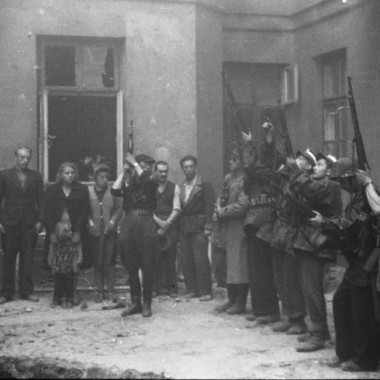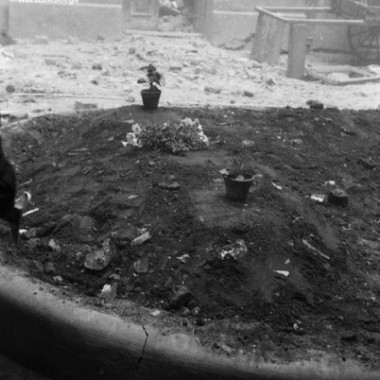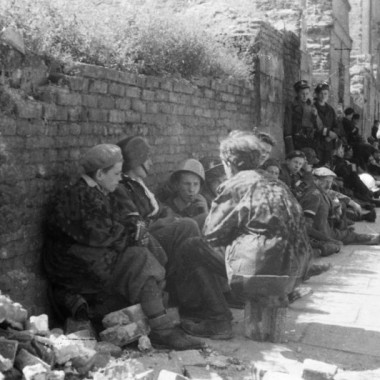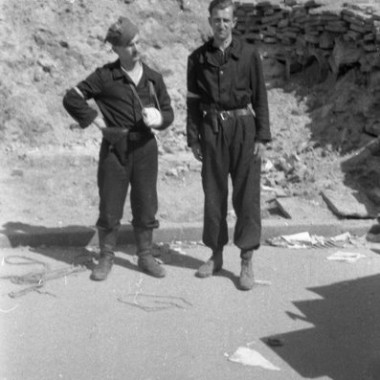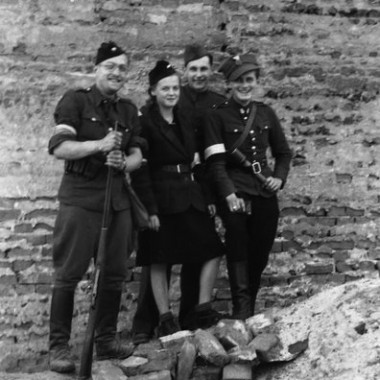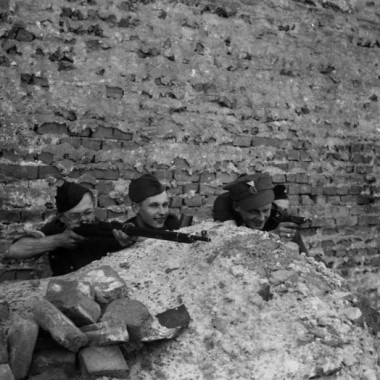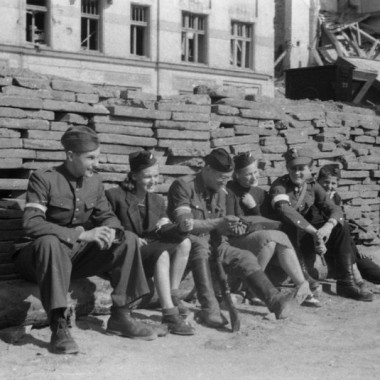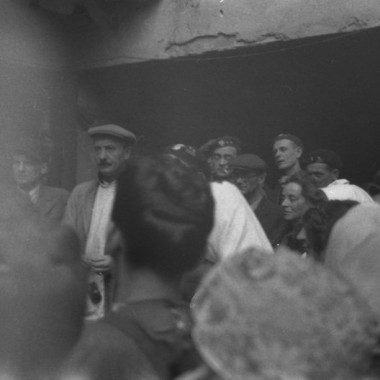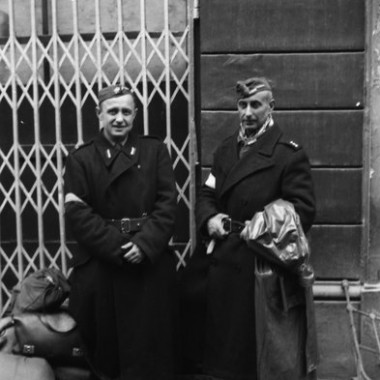Second Lieutenant Czesław Gerwel “Orłoś” was born on 18 July 1909 in Baranovichi, now in Belarus. He studied at the Romuald Traugutt State Middle School in Brest. In 1939, he graduated from the Poznań University’s Faculty of Mathematics and Natural Sciences. In May 1940, he and his wife were sent as forced labourers to Martenshagen near Stralsund in Western Pomerania. He returned to Warsaw with his family upon his release in December 1940. In 1941, Gerwel took a job with the State Institute for Hygiene, and in 1941 he joined the Home Army. His work with the underground included helping to produce and smuggle typhus vaccinations to guerrilla units and into the Warsaw Ghetto. Beginning in 1942, he served in the Home Army’s Naval Force ”Alfa”, and on 14 September 1943, he was posted as Officer Cadet/Petty Officer 3rd Class to Force’s Medical Service Unit. Between 1942 and 1944, he studied medicine at the underground University of the Western Lands in Warsaw. During the Rising, he served in the ”Chrobry II” Group in City Centre North. Gerwel was responsible for a bacteriological-epidemiological lab and a pharmacy at the hospital at 27 Wspólna Street. After the capitulation, he was deported to Stalag IV B in Zeithain as a POW, where he was involved in setting up and running the Polish Military Hospital as a junior head of ward. After the liberation of the camp, he studied at the Centre for Polish Students in Brussels In 1946 he returned to Poland and settled down in Poznań. In 1950, he made a PhD degree in Mathematics and Natural Sciences, and was nominated an Associate Professor in 1961, when he created Poland’s first Clinic for Parasitic Diseases at the Academy of Medicine in Poznań. He was the author of numerous publications on parasitology. Gerwel died on 12 September 1974 in Poznań.
During the Rising and his subsequent incarceration as a POW in Zeithain, Czesław Gerwel took 216 photographs with a 35mm Leica camera which he had been given by his brother, Tadeusz Gerwel, a doctor. On the inside of the camera’s case there is an inscription which reads ”T. Gerwel, Doctor, Świętojańska St., Gdynia, Poland”. Czesław Gerwel managed to smuggle the negatives out of Warsaw and through various inspections at the POW camp in Zeithain. Taken in August and September 1944, his photographs depict the lives of the insurgents, paramedics, and civilians during the Rising around the barricade on the corner of Wielka and Sienna Streets, and the neighbouring area. The last images taken during the Rising in late September 1944 are those of the hospital at 27 Wspólna Street. His photographs of the Polish Military Hospital in Zeithain show everyday life in the camp – doctors and nurses, carrying out their duties and at rest; as well as patients in the hospital barracks.





